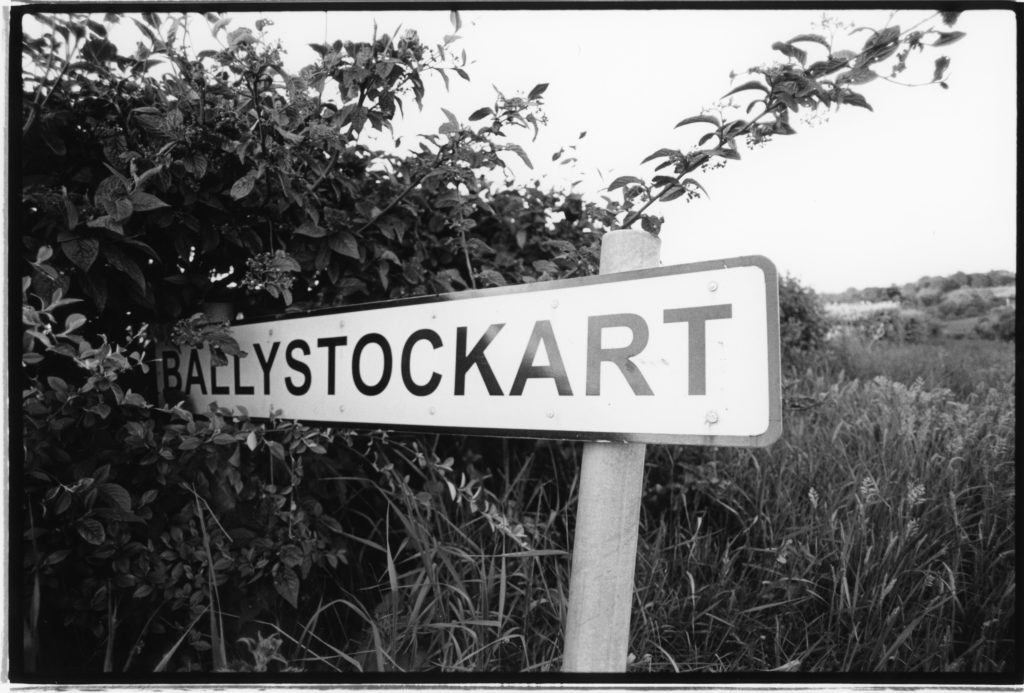In an extract from his book ’75 Van Songs’, Stuart Bailie considers the fishing trip at the centre of Van Morrison’s ‘And It Stoned Me’.

Over ten thousand years ago, the glaciers were retreating from Ireland. The gift of the late Pleistocene era was the appearance of many smooth hills in the lowlands, reaching from Donegal Bay to Strangford Lough. This was a feature known as the droimlín – Irish for the little back, or ridge. The ice that had sheered down from the mountains left these deposits of moraine. The back of the drumlins tapered off in the direction of the glacier flow. The landscape looked like a basket of eggs. It was lovely, especially around County Down.
Drumlin landscapes are graced with curves and reveals. There are hidden townlands, slopes for grazing and farmhouses by the tops of the ridges, sheltered by trees. The landscape was valued by CS Lewis, who remarked that “Heaven is Oxford, lifted and placed in the middle of County Down”. More recently, popular musicians have paid their dues. Two Door Cinema Club took time out from their stadium-ripping gigs to murmur a homesick note on the lyric to ‘Sun’.
“Drawn apart
New York and London
All I see now
Are distant drumlins.”
Likewise, Duke Special looks to the hills for comfort after a depressing gig experience across the Irish Sea. He makes his complaint in ‘Brixton Leaves’:
“Just one more night in London
And home, well, is a distant drumlin.”
But the greatest evocation of drumlin country is in the Van Morrison song. ‘And It Stoned Me’. The song is sited around Ballystockart and Gransha, the rolling topography that leads down to Comber and Strangford Lough. It is about a nature trip, a visit with an express purpose and then unforeseen joy.
Another aspect of lowland glaciation is that the earth deposits have a high clay content. In the west of Ireland where the rainfall is especially heavy, this creates marshland and inhospitable drainage. But in the east, around County Down, the precipitation isn’t as bad and so the lakes between the drumlins are fine for fishing: pike and perch, roach and rudd. A local with a bit of knowledge the right tackle might also search out some tench, trout and bream.
The boys in the Van Morrison song are not experienced anglers. They have made the six mile trip from Belfast with their fishing poles, keen intentions and a half crown coin. They’ve come from the smog and the noise of the industrial east and here they are, lost in adventure, drenched by a downpour.
Like any 12 year olds they have a mythic capacity that takes them to a whole other excursion. George Jones, one of Van’s contemporaries from Bloomfield remembers the imaginary power of youth and the fever dreams of American popular culture. Even the local stream, the Beechie, was fair game. “To us, it could’ve been the Mississippi. We built rafts to sail on it but we didn’t get very far. We kept bumping into the old prams and other stuff dumped in it.”
Likewise the trip to Ballystockart takes on the epic scale of a Mark Twain story. The singer and his friend Billy are excitingly adrift, like Huck Finn and Jim the freedom-bound slave. The song mentions a county fair and a pick-up truck, emblems of Americana, not readily available in Comber. But importantly the rain quits and the boys get their ride to the fishing spot where they take a spontaneous swim.
It seems like perfection already but then they meet with a kind old man who brings them to his cottage and sets them up with bottles of water, freshly hauled from the stream.
‘And It Stoned Me’ tries to drink in this simple elation. It’s like the best drug, the most amazing love, and just as the gospel singers tell it, it’s like going home. Van is also thinking of very heaven. The voice reaches higher in the chorus lines, the brass charts are gorgeously managed and absolutely, the hills are alive.
*
75 Van Songs by Stuart Bailie is out October 2020. Order a copy here, via Kickstarter. You can keep tabs on the project here, and follow Stuart on Twitter here.
Stuart is also the editor of excellent arts and music magazine Dig With It, which we dig big time. Read more about it / buy a copy here.